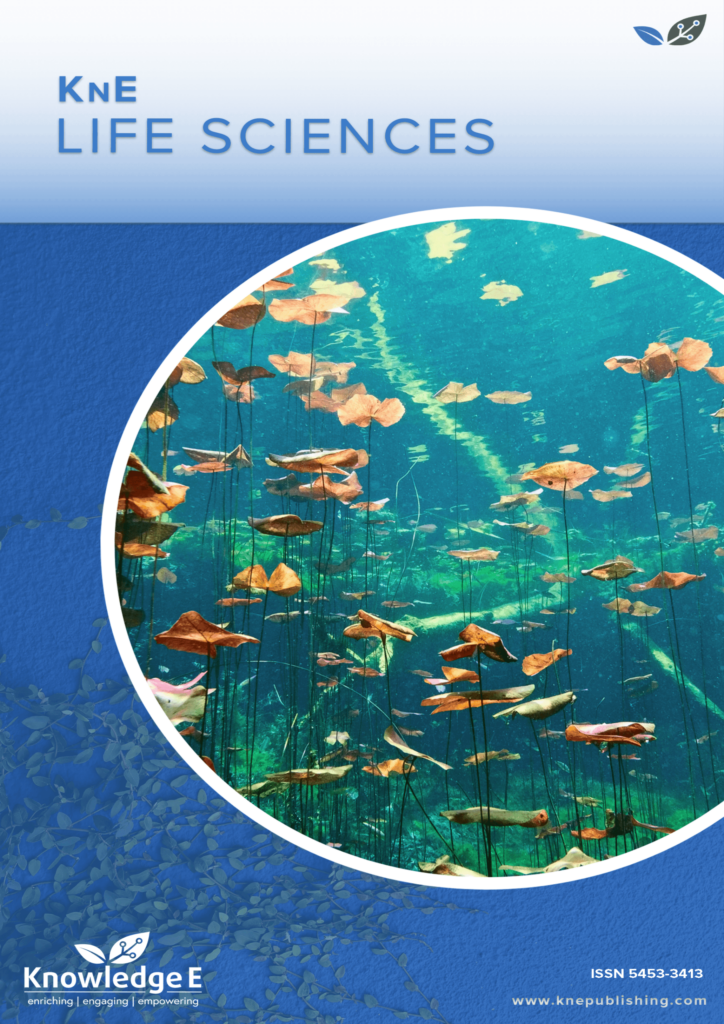
KnE Life Sciences
ISSN: 2413-0877
The latest conference proceedings on life sciences, medicine and pharmacology.
Evaluation of Textile Industry Wastewater Treatment as an Effort to Control River Water Pollution in Central Java
Published date: Jun 07 2022
Journal Title: KnE Life Sciences
Issue title: The First Asian PGPR Indonesian Chapter International e-Conference 2021
Pages: 48–61
Authors:
Abstract:
There is an increasing need for clean water because of the growing population. However, the amount of clean water is decreasing due to poor water resource management. Several textile industry processes result in waste. Color, alkalinity, high TSS, high BOD, and some dyes are known to contain chromium elements and are all common characteristics of liquid waste produced by the textile industry. The goal of this study was to assess the performance of textile waste treatment units in Pringsurat Subdistrict, Magelang Regency, Central Java Province, as part of an effort to reduce river water pollution. Quantitative and qualitative methods were used including through surveys and mapping. Groundwater flow maps, and river water and wastewater levels of BOD, COD, TSS, phenol, chromium, ammonia, and sulfide were used as primary data. Unpleasant odors and discoloration of the river were observed. It is recommended that, to reduce the impact of the wastewater, a constructed wetland with a combination of two types of plants, Iris pseudacorus and Thypa angustifolia, should be used.
Keywords: Pollution Control, River Pollution, Textile Industry, Wastewater treatment, and Wetland
References:
[1] P. P. Sarjana, U. Hasanuddin, and N. I. Said, “Pengolahan Air Limbah Industri Kecil Tekstil Dengan Proses Biofilter Anaerob-Aerob Tercelup,” J. Teknol. Lingkung., vol. 2, no. 2, pp. 1–145, 2002.
[2] B. Tejokusumo, “Limbah Cair Industri Serta Dampaknya Terhadap Kualitas Air tanah Dangkal Di Desa Gumpang Kecamatan Kartasura,” Universitas Sebelas Maret, 2007.
[3] U. Suriawiria, Air dalam Kehidupan dan Lingkungan yang Sehat. Bandung: Alumni, 1996.
[4] A. Utami, N. E. Nugroho, S. V. Febriyanti, and T. Nuur, “Evaluasi Air Buangan Domestik Sebagai Dasar Perancangan,” J. Presipitasi, vol. 16, no. 3, pp. 172–179, 2019.
[5] A. Nurmitha, “Penurunan BOD, COD, dan Fosfat Pada Limbah Laundry Menggunakan Fitoremediasi Dengan Sistem SSF-Wetland Aliran Kontinyu,” Universitas Gadjah Mada, 2017.
[6] Kementrian Lingkungan Hidup, “KepMENLH no. 115 Tahun 2003 Tentang Pedoman Status Mutu Air,” 2003.
[7] R. Indonesia, “Peraturan Pemerintah Nomor 22 Tahun 2021 tentang Pedoman Perlindungan dan Pengelolaan Lingkungan Hidup,” Sekretariat Negara Republik Indonesia, vol. 1, no. 078487A. pp. 1–483, 2021, [Online]. Available: http://www.jdih.setjen.kemendagri.go.id/.
[8] Metcalf and Eddy, Wastewater Engineering Treatment and Reuse, Fourth. New York: McGraw-Hill, 2004.
[9] D. Mazumder, “Process evaluation and treatability study of wastewater in a textile dyeing industry,” International Journal Energy Endvironmentvironment, vol. 2, no. 6, pp. 1053–1066, 2011, [Online]. Available: http://ijee.ieefoundation.org/vol2/ public_html/ijeeindex/vol2/issue4/IJEE_03_v2n4.pdf.
[10] R. Herschy, “The velocity-area method,” Flow Measurement and Instrumentation, vol. 4, no. 1, pp. 7–10, 1993, doi: https://doi.org/10.1016/0955-5986(93)90004-3.
[11] Sugiharto, Dasar-dasar pengelolaan air limbah. Universitas Indonesia (UI-Press), Jakarta, 2014.
[12] Isyuniarto, W. Usada, A. Purwadi, and Suryadi, “Degradasi fenol dalam limbah pengolahan minyak bumi dengan ozon,” Prosiding PPI-PDIPT 2005, vol. 1, pp. 76–81, 2005.
